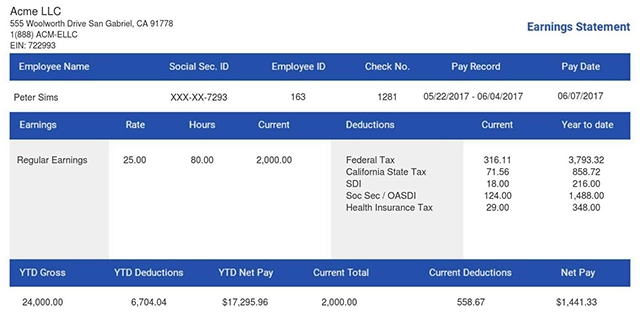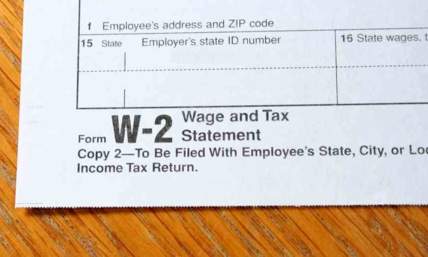What You Should Know About Taking a Leave of Absence
A leave of absence is not just a break from your job. It is a formal arrangement where you leave your job for a period. This occurs when something happens. For example, having a new baby or a serious health issue. This leave usually covers an extended period that is more than just a few days.
Since employees have to balance their busy jobs with their personal responsibilities, leaves of absence are sometimes needed. Therefore, whether as an employer or employee, knowing how leaves of absence work is important.
By the end of this article, you will understand leave of absence meaning, and the types of leaves. We’ll explain how it works. This way, employers and employees can understand the process of leaves of absence properly.
What Is a Leave of Absence?
A leave of absence is typically a time away from your job. It is longer than your usual vacation or sick days. This type of leave is usually for situations that demand your time and attention. It is not something you can do over the weekend or within a couple of days.
This leave is different from other kinds, like paid time off or a vacation. There is a clear difference between leaves of absence and the other types. It is in terms of their reason and their length. A PTO is short-term rest and for minor personal matters, while a leave of absence is long-term.
Why Leave of Absence Is Important
A leave of absence is important because it gives employees time off work to deal with their personal matters or issues. They can be difficult to handle alongside a full-time job. Sometimes, it’s taking time off to care for their newborn, recover from illness, or to support a family member.
It can also be much more serious, like a personal crisis. Then this way, they don’t have to choose between their job and their well-being. Employees still get to have their job role during this leave, regardless of how long it is.
For employers, giving employees their leave could also benefit them. It could help to make recruitment easier. In a competitive job market, if a job has a solid leave policy, it can be the deciding factor for top talent.
Also, it could help improve their employees’ productivity because when they return, they feel refreshed. Overall, giving employees leave of absence helps to build a good workplace culture. It goes to show that their well-being matters.
Types of Leave of Absence
There are two main categories of leaves of absence:
-
Mandatory Leave
Mandatory leave is the time off you have a legal right to take, as long as you meet certain criteria. These criteria are usually set by federal, state, or local laws, and employers must meet them.
The Family and Medical Leave Act (FMLA) is the most common mandatory leave, which allows eligible employees to take time off work. Depending on your reason, you can be allowed to take up to 12 weeks of leave.
Not everyone automatically qualifies for the Family and Medical Leave of Absence. There are certain requirements to be eligible. You must have worked for at least 12 months and for 1,250 work hours. All of which should be in the past 12 months before starting another leave.
Another thing is that the number of employees in a company matters too. So, the law generally applies to companies with more than 50 employees working within a 75-mile radius. However, public agencies and schools are not affected by FMLA. This is regardless of their staff size.
Other federal protections for Mandatory leaves include:
-
Americans with Disabilities Act (ADA): This is under medical leave of absence. It is necessary for employees with disabilities.
-
Jury duty: This is under the Jury Systems Improvement Act, which protects employees from losing their jobs for serving.
-
Military leave: It is under the Uniformed Services Employment and Reemployment Rights Act (USERRA) and FMLA military caregiver leave.
-
Voluntary Leave
Voluntary leave is one that’s not required by law. It’s something that your employer chooses to provide. It mostly comes as part of a competitive benefits package.
Common voluntary leave reasons include:
-
Sabbaticals for rest or research.
-
Time for personal development or further education.
-
Relocating to a new home or city.
-
Extended bereavement beyond what the law requires.
-
Mental health breaks to prevent burnout.
Paid vs. Unpaid Leave of Absence
Paid leave means your employer will keep paying you even though you’re on a break and not actively working. It is usually for voluntary leaves of absence. Some employers pay their workers more than the legal minimum. They offer generous paid time off.
On the other hand, unpaid leave means your absence from work without receiving any pay. This is common for the Family and Medical Leave Act (FMLA) time off. While it protects your job, it doesn’t require your employer to pay you.
Note that state laws can change the rules. The federal government usually doesn’t require paid leave. However, some states do require employers to provide it. They can offer it under specific circumstances, like paid sick days or family leave.
Your benefits, such as health insurance and retirement contributions, might not continue while you're on leave. This depends on your employer’s policies and the type of leave you take. For example, some companies keep your health coverage active. They would then pause your retirement contributions until you return.
How Employees Can Request For Leaves of Absence
When requesting your leave, you need to communicate clearly and plan properly. Most importantly, you need to follow your company’s process. Here’s how you can do that:
-
Review Your Company Policies: Every workplace has its own rules. So, before you act, check your employee handbook or HR resources. This helps you understand the rules relating to your company’s leave.
-
Know the Type of Leave You Need: Figure out if your leave request is legally protected or voluntary. Also, try to clarify whether it’s paid or unpaid so you know what exactly to expect.
-
Gather Required Documents: If your leave is for medical reasons, family care, or special situations, get your proof ready. It can be a doctor’s note, medical certificate, or evidence of the event that led to your request.
-
Notify Your Supervisor Early: Give your supervisor an early or advance notice, especially if your leave is planned. This allows them to prepare for when you’re going.
-
Submit a Formal Request: Complete the official HR form or use your company’s online leave system. Make sure you keep a copy for your records in case you need to refer to it later.
-
Discuss with Your HR: Ask the HR how your leave will impact your pay and benefits. Find out about your salary, health insurance, retirement plans, and vacation accrual.
-
Set Communication Expectations: Agree with your supervisor on whether you’ll check emails, take calls, or remain offline during your absence.
Extending Your Leave of Absence
When you plan to extend your leave, it could depend on whether the leave is mandatory or voluntary. In some cases, you can make an extension because of laws like the Americans with Disabilities Act (ADA) or certain state laws. This is if the extra time is because of a medical condition or recovery. Therefore, your employer must provide you with additional leave because it’s mandatory.
If your leave is voluntary, it entirely depends on your boss to grant you extra time. If your reason is feasible, they might grant it to you, although it’s not guaranteed. For example, California’s Fair Employment and Housing Act (FEHA) requires employers to consider extending employees' medical leave if it’s reasonable.
In Summary
Taking a leave can be complicated. This is whether it is for personal, medical, or family reasons. That is why you need to understand how an employer or employee works. For employers, it’s important to build a fair and supportive environment. This keeps your business running smoothly. It’s also about respecting your employees who work to keep it running. Employees must understand their rights, responsibilities, and leave policies.
When done well, leave-of-absence policies help the company. This is why our Pay Stub Generator makes it simple to create accurate, professional pay stubs during this time. They also help to build employee trust and cut down on misunderstandings. Start generating your paystubs today; it is quick, easy, and stress-free.














